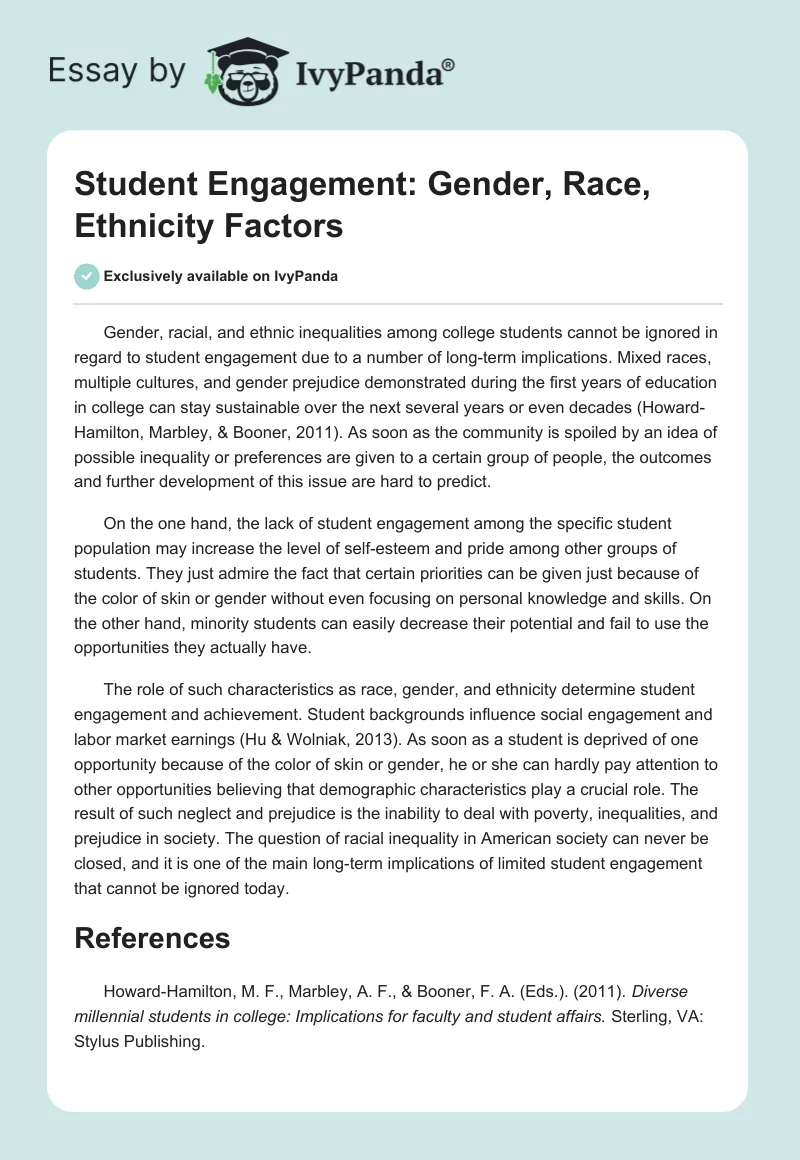Gender, racial, and ethnic inequalities among college students cannot be ignored in regard to student engagement due to a number of long-term implications. Mixed races, multiple cultures, and gender prejudice demonstrated during the first years of education in college can stay sustainable over the next several years or even decades (Howard-Hamilton, Marbley, & Booner, 2011). As soon as the community is spoiled by an idea of possible inequality or preferences are given to a certain group of people, the outcomes and further development of this issue are hard to predict.
On the one hand, the lack of student engagement among the specific student population may increase the level of self-esteem and pride among other groups of students. They just admire the fact that certain priorities can be given just because of the color of skin or gender without even focusing on personal knowledge and skills. On the other hand, minority students can easily decrease their potential and fail to use the opportunities they actually have.
The role of such characteristics as race, gender, and ethnicity determine student engagement and achievement. Student backgrounds influence social engagement and labor market earnings (Hu & Wolniak, 2013). As soon as a student is deprived of one opportunity because of the color of skin or gender, he or she can hardly pay attention to other opportunities believing that demographic characteristics play a crucial role. The result of such neglect and prejudice is the inability to deal with poverty, inequalities, and prejudice in society. The question of racial inequality in American society can never be closed, and it is one of the main long-term implications of limited student engagement that cannot be ignored today.
References
Howard-Hamilton, M. F., Marbley, A. F., & Booner, F. A. (Eds.). (2011). Diverse millennial students in college: Implications for faculty and student affairs. Sterling, VA: Stylus Publishing.
Hu, S., & Wolniak, G. C. (2013). College student engagement and early career earning: Differences by gender, race/ethnicity, and academic preparation. The Review of Higher Education, 36(2), 211-233.


